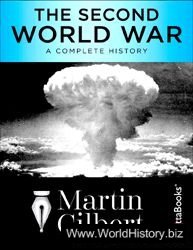The Incas apparently used two different calendars, one for daytime and one for nighttime (Morris and von Hagen 1993: 180-183). The daytime calendar was based on the solar cycle and was approximately 365 days long. It was used for economic activities such as agriculture, mining, warfare, and construction. The movement of the sun was particularly important to the Inca agricultural calendar, being used to fix the days of planting. Four towers were built on the horizons east and west of Cuzco to mark the rising and setting locations of the sun in August,
The time of planting corn and potatoes. The point of view was the ushnu in the main plaza of the city. When the sun rose over the first tower on the eastern horizon and set over the corresponding tower on the western horizon, it marked when the early crops should be planted in August. When the sun rose between two towers built close together farther south, it marked the time of general sowing in September (Rowe 1946: 327).
Zuidema (1990: 90) suggests that the Incas’ nighttime calendar was developed to mark important ceremonies to the moon and stars (see below), which were sacred deities of the Incas. It had only 328 days, which equals twelve months of 27.33 days each. The latter almost corresponds to a lunar month, which is 28 days long.
There is an apparent problem with correlating the daytime calendar, based on the sun, and the nighttime calendar, based on the moon. The latter is 37 days shorter than the former. It is uncertain whether this correlation was important to the Incas.
Some scholars have argued that the Inca calendars could not have been based on such observations, as there is no good evidence of either the accuracy of the measurements or the particular astronomical risings and settings needed (Dearborn and Schreiber 1989). Part of this debate concerns whether the Incas recorded the solstices (the northernmost and southernmost points of the sun), the equinoxes (the midpoint between the northernmost and southernmost positions), and the zeniths of the sun and moon (the highest points in their orbits overhead). Zuidema (1990) and Ziolkowski and Sadowski (1989) suggest they did, but they base their arguments on the presence of important ceremonies falling on or near the days of those events. Dearborn and Schreiber (1989) argue that the observation lines are not sufficiently accurate to be sure that these ceremonies actually were celebrating the particular astronomical events.
What is clear about both Inca calendars is that they were used for determining when important ceremonies should be conducted, rather than simply for marking time. This relates to the Inca belief that nothing happened by accident but was always caused by a supernatural force (see Chapter 5, Religion). The agricultural activities and important ceremonies of the daytime calendar are listed below, given in terms of the modern months when they occurred (from Kendall 1973: 149-150, 198-200). See Chapter 5 for a description of the ceremonies. As stated previously, the Incas did not associate equal periods of time with each month; rather, they recorded the passage of the year in terms of the activities and ceremonies required of the gods at different times. Therefore the correlation of the Inca’s calendars with the modern one is only approximate.
Daytime calendar
December. Coca planting.
Nighttime calendar
Capac Raymi (December). The boys’ puberty ceremony was an important part of Capac Raymi, as were other rituals concerning the Sun. Tribute for the Inca state and religion was brought to Cuzco from the provinces at this time.
January. Weeding of Camay quilla (January). A continuation of some of the
Puberty ceremonies from the previous month was conducted, along with others to Viracocha, the principal god.
Fields.
F ebruary-March. Harvest of the potato and other root crops.
April. Protecting the corn fields from deer, foxes, and human theft
May. Corn harvest.
June. Large potatoes were harvested and others planted.
July. Storage of potatoes and other crops; cleaning of irrigation canals.
August-September. Planting of the corn and potato crops.
November. Irrigation of the corn fields.
Hatun-pucuy (February). Ceremonies were conducted to increase the corn and other crops.
Pacha-pucuy (March). More rituals were conducted to ensure that the crops ripened properly.
Ayrihua (April). Ceremonies honoring the Inca king were held.
Aymoray quilla (May). Celebration of the corn harvest was held.
Inti Raymi (June). Important rituals were conducted to the Sun.
Chahua-huarquiz (July). Ceremonies for the irrigation systems were held.
Yapaquiz (August). Sacrifices were made to all the gods, especially those associated with the forces of nature.
Coya Raymi (September). The city of Cuzco was purified, and the sacred idols of conquered people were brought to pay homage to the king.
K’antaray (October). Ceremonies were conducted to ensure adequate rainfall.
Ayamarca (November). The Festival of the Dead was conducted, with the bodies of dead kings brought out of their tombs to receive offerings and food.
98
99
As can be seen, the nighttime calendar was more focused on nonagricultural ceremonies, although some months did have rituals in celebration of certain crops or related activities such as irrigation. The importance of corn to the Incas is indicated by the significance of the month of May in both calendars, which celebrated the harvest. The nighttime calendar, based on the moon’s cycles, was important in setting the time of rituals. The Incas began their calendar in December with the Capac Raymi festival (Cobo 1990: 126).
Most pre-Inca groups had little need for standardized units of measurement and probably did not have them. It is likely that many conquered people observed the movements of the sun, moon, and stars and marked the passage of time by them, as the Incas did. Whether they had detailed calendars is unknown.
Inca religion was extraordinarily complex and constituted a fundamental part of Inca life. It emphasized formality and ritual; most activities were focused on agricultural practices, deity worship, or curing disease. For this reason the Incas had a very large group of priests who directed the formal religious practices of the state, and other individuals who could be consulted to help in matters of a more personal nature. Although religious and governmental bureaucracies were separate, it would be a mistake to say there was a separation of church and state. Few governmental actions were conducted without consulting the gods. In fact, the more important the activity, the more important the religious rituals that were necessary for the success of the venture. In addition, the religious bureaucracy depended on the state’s conquests to provide food and supplies needed to conduct its affairs.
The conquering Spaniards regarded any religion except Christianity as evil and any other religious beliefs as devil worship. Thus they made an exceptionally determined effort to stamp out native religion. Nonetheless the Spaniards’ interest in eliminating the native religion also led them to write a good deal about its practices and thereby pass on knowledge about it to future generations.




 World History
World History









